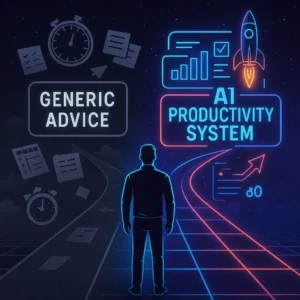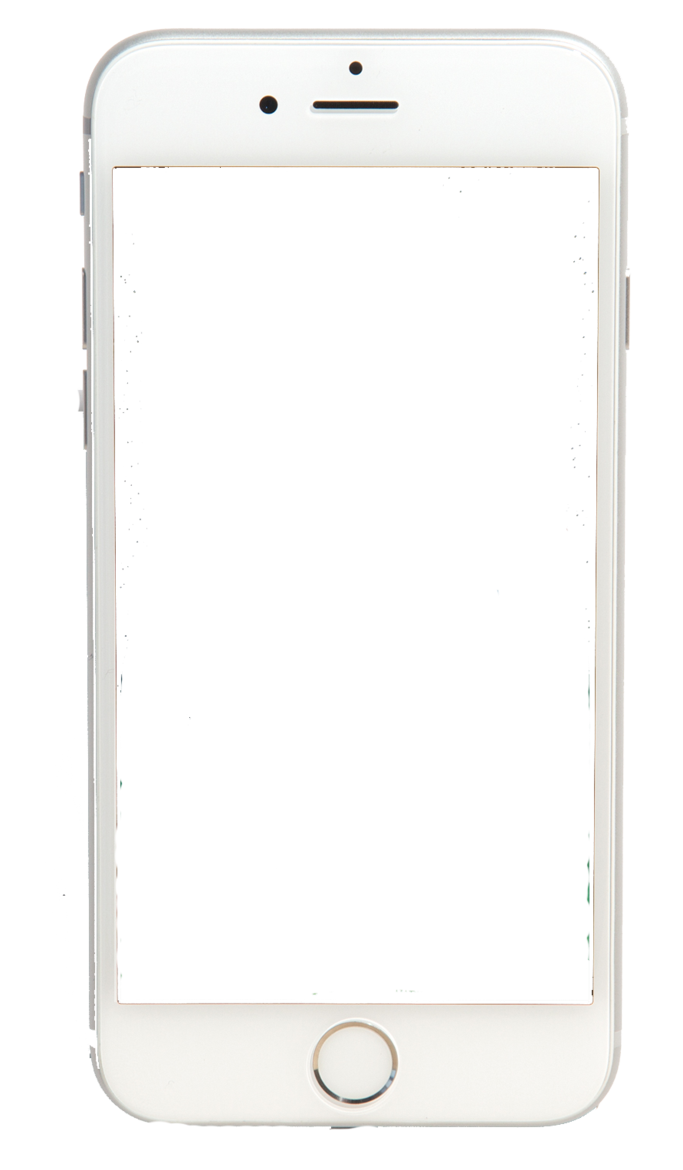Do you recognize that uneasy feeling—when you know precisely what actions would transform your life, yet something invisible holds you back from taking them?
Three weeks ago, I witnessed a colleague turn down a department head position he’d been preparing for over eighteen months. His reason? The role demanded facilitating executive strategy sessions and public presentations. “That’s just not me,” he explained, choosing instead to remain in his current position for another year.
This experience revealed an undeniable truth: stepping out of your comfort zone is the gateway to the life you’re meant to live, not an optional exercise. It’s the entry fee for accessing your full potential.
If watching chances slip away while hesitation keeps you paralyzed sounds familiar, this comprehensive guide reveals the brain science explaining why getting out of your comfort zone creates such resistance—and crucially, how to make the process significantly simpler through evidence-based methods, including AI-powered customization for your specific circumstances.
What Is Comfort Zone? Recognizing Your Invisible Boundaries
Your comfort zone represents the mental state where anxiety disappears, control feels certain, and safety dominates. Here, established patterns dominate, results seem foreseeable, and pressure stays low. Evolutionarily speaking, this protective zone helped early humans survive—familiar territories and predictable resources meant avoiding threats.
Here’s the paradox: what protected ancient humans now imprisons modern ones.
Remaining within your comfort zone means your mind operates mechanically. Your prefrontal cortex—the engine of advancement and choice—surrenders control to your basal ganglia managing automated behaviors. Neural connections become so entrenched that escape appears unattainable.
Typical comfort zone examples include remaining at an unsatisfying workplace due to familiarity, skipping professional gatherings where you lack connections, withholding your perspectives during discussions despite having important contributions, repeating identical meal orders habitually, or rejecting possibilities that involve potential disappointment. These apparently minor protective choices accumulate gradually, systematically limiting your opportunities.
Read More: Abundance vs Scarcity Mindset
Why You’re Actually Stuck: Understanding the Real Barriers
Recognizing what maintains your stagnation proves more significant than you’d expect. Three compelling forces work together to preserve your comfort:
Your Neural System Confuses Social Risk With Physical Threat
Your amygdala—your brain’s alarm system—activates the same warning response whether you’re encountering genuine danger or contemplating requesting better compensation from your supervisor. This evolutionary disconnect clarifies why getting out of your comfort zone produces authentic bodily discomfort despite logical safety.
The challenge intensifies because your cognition operates with negativity bias. A single awkward experience from taking initiative can mentally eclipse numerous positive outcomes, progressively increasing your caution.
Cultural Programming Reinforced Risk Avoidance
Throughout early development, most people absorbed messages that “avoiding mistakes matters most” and “security trumps exploration.” Academic institutions celebrate correct responses while penalizing missteps, systematically training us to perceive mistakes as humiliating rather than instructive. Stanford’s Carol Dweck identified that individuals harboring a “fixed mindset” view their capabilities as unchangeable, whereas those embracing a “growth mindset” interpret obstacles as developmental opportunities.
The fixed perspective creates entrapment because every obstacle becomes evidence of your limitations. When mistakes signify inadequacy, what rational person would accept that risk?
The Actual Price of Remaining Safe
Most people overlook this reality: maintaining comfort carries quantifiable costs. Studies demonstrate that individuals who consistently step out of their comfort zone experience thirty-four percent greater overall satisfaction, forty-one percent richer connections, and twenty-eight percent accelerated professional progression.
Meanwhile, those preserving comfort encounter what researchers term “inaction regret”—the agonizing recognition during later years that anxiety prevented them from pursuing aspirations. Bronnie Ware, working with terminal patients, recorded their predominant final regret: “I wish I’d possessed the bravery to honor my authentic self, rather than living according to others’ expectations.”
Read More: How to Take Action
Why Discomfort Drives Transformation: Understanding the Returns
Before exploring implementation, let’s clarify exactly why stepping out of your comfort zone generates such remarkable transformation. Grasping these advantages supplies the determination you’ll require when discomfort beckons retreat.
Neural Restructuring Occurs Physically
Better still? Consistent discomfort practice diminishes your amygdala’s reactivity while strengthening your prefrontal cortex’s authority, meaning getting out of your comfort zone grows progressively simpler as your neural structure adapts to perceive challenges as possibilities rather than dangers.
Innovation Capabilities Expand Dramatically
Stanford research discovered that people regularly experiencing novel situations demonstrate twenty-three percent stronger creative problem-solving capacity. Unfamiliarity compels your cognition to establish different connections and detect previously invisible patterns. This amplified innovation extends beyond your immediate challenge area—it influences every life dimension.
Self-Assurance Builds Upon Itself
Every instance of confronting discomfort and persisting—or flourishing—generates concrete proof that your capabilities exceed previous assumptions. This produces an ascending confidence spiral where your self-concept transforms from “someone risking failure” to “someone actively developing.”
Development Compounds Rapidly
Consistently extending beyond current limitations compresses years of advancement into months. Capabilities requiring others years to master arrive faster because you’re actively pursuing challenges rather than dodging them.
How to Get Out of Your Comfort Zone: Implementing Proven Methods
Now the actionable component: precisely how to get out of your comfort zone using methodology that sustains growth without creating overwhelm. Success requires strategic, achievable progressions you can adapt to your circumstances.
Step 1: The Optimal Challenge Principle—Identifying Your Growth Sweet Spot
Psychologist Mihaly Csikszentmihalyi identified that ideal development happens when difficulty marginally surpasses existing capability. Insufficient challenge breeds boredom. Excessive challenge triggers overwhelm. Success means discovering challenges providing just enough discomfort to extend you without breaking you.
Consider resistance training. Lifting insufficient weight won’t develop muscle. Excessive weight risks harm. But lifting moderately beyond comfortable capacity, incrementally advancing over time, generates extraordinary strength.
Applied Exercise: Chart Your Challenge Spectrum
Take a notebook and establish three sections:
- Complete Comfort: Activities you execute effortlessly (established routines, known social environments, current work duties)
- Moderate Discomfort: Things creating nervousness but remaining achievable (addressing smaller audiences, contacting casual acquaintances, exploring unfamiliar activities)
- Extreme Anxiety: Activities appearing terrifying currently (addressing large audiences, approaching senior leaders, launching independent ventures)
Your development target exists in section two. These represent your optimal challenges—sufficiently uncomfortable for generating growth, sufficiently manageable that you’ll maintain commitment.
Application Example:
Rachel, a financial analyst, recognized comfort with independent analysis but moderate discomfort with interdepartmental communication. Rather than attempting her overwhelming fear (industry conference presentations), she committed to joining one collaborative initiative monthly. Eight months later, those collaborative engagements felt routine, enabling her to advance toward presenting biannual insights to executives—her updated optimal zone.
Step 2: Implementing the Three Resistance Reducers
The most effective approaches to getting out of your comfort zone minimize resistance through three evidence-validated principles that behavioral researchers like James Clear and BJ Fogg have established:
Resistance Reducer #1: Create Visibility
Your surroundings influence behavior more powerfully than determination. Research confirms visible prompts boost completion by three hundred percent.
Universal Strategies:
- Establish automated reminders for your development activity
- Position visible prompts throughout your space (adhesive notes on mirrors, meaningful objects on workspaces)
- Communicate your specific commitment to someone creating social accountability
- Block the activity as an unmovable commitment
Practical Illustration:
Tyler aimed to strengthen his professional connections but consistently postponed networking opportunities. His “Create Visibility” approach: establishing a repeating schedule block each Wednesday at 10 AM labeled “Connect With One New Professional,” positioning his contact cards in his briefcase pocket before departures, and sharing his weekly objective with his teammate. These observable triggers elevated his completion from nothing to four new relationships monthly.
Resistance Reducer #2: Simplify Execution
Begin with minimal commitments that circumvent your mind’s opposition systems. BJ Fogg’s investigations confirm microscopic behaviors, applied consistently, generate substantial transformation.
Universal Strategies:
- Apply the Two-Minute Standard: when something requires under two minutes, execute immediately
- Divide substantial challenges into absurdly small initial actions
- Connect new behaviors to established patterns (habit linking)
- Arrange everything beforehand to eliminate choice moments
Practical Illustration:
Amanda desired comfort with public communication but felt immobilized by the concept. Her “Simplify Execution” method: committing to contributing just once during weekly team discussions—zero preparation necessary, simply raising her hand and offering one perspective. Following four weeks of this micro-behavior, she felt prepared to accept a brief five-minute update. Eight months afterward, she was facilitating monthly division briefings. The microscopic initial action enabled everything subsequent.
Resistance Reducer #3: Build Enjoyment and Recognition
Establish instant positive reinforcement through gamification, acknowledgment, and observable monitoring. Nature Neuroscience research discovered immediate recognition boosts behavior continuation by four hundred percent.
Universal Strategies:
- Monitor your bravery visibly (marks on calendars, points in applications, tokens in containers)
- Acknowledge immediately following courageous actions (celebration gestures, messaging three supporters, rewarding yourself)
- Gamify the progression by establishing tiers or accumulating rewards
- Distribute victories with encouraging people who’ll magnify your accomplishments
Practical Illustration:
Chris developed a “Bravery Points” framework for stepping out of his comfort zone. Each uncomfortable action earned points: 5 points for starting conversations with unfamiliar people, 10 points for contributing ideas during meetings, 25 points for attending professional gatherings. Reaching 100 points, he purchased concert admission. Achieving 500 points, he reserved a weekend adventure. The gamification converted discomfort from something avoided into something pursued.
Step 3: Develop Your Social Assurance
Among the most prevalent comfort zone examples people encounter involves social circumstances. Whether professional networking gatherings, requesting guidance from accomplished individuals, or basic conversation, social discomfort maintains countless people separated.
The Authentic Connection Approach
Rather than superficial dialogue, employ questions that generate genuine involvement:
- “What specifically attracted you to attending this gathering?” (Demonstrates authentic curiosity)
- “Which project are you currently working on that excites you most?” (Encourages enthusiastic sharing)
- “If you could address one significant challenge facing our field, what would you tackle?” (Generates substantive dialogue)
- “What drives you forward when beginning each day?” (Reveals core values and priorities)
- “What new knowledge are you pursuing that energizes you?” (Centers on development and passions)
Conversation Enhancement Techniques:
When someone reveals something compelling:
- “That’s intriguing—what influenced your decision to pursue that direction?”
- “What aspect of that experience has surprised you most?”
- “If someone else wanted to attempt something similar, what guidance would you offer?”
Polished Conclusion Approach:
When discussions naturally conclude:
- “This exchange has been valuable—I’d appreciate continuing this discussion. Would you be comfortable connecting through LinkedIn?”
- “I should meet several other attendees, but I’d value staying connected. What’s your preferred contact method?”
Graduated Practice Sequence:
- Week 1 (Minimal Risk): Practice these questions with familiar colleagues or friends
- Week 2 (Moderate Risk): Apply the framework with less familiar people at informal gatherings
- Week 3 (Elevated Risk): Approach one solitary person at a professional function
- Week 4 (Target Risk): Conduct two meaningful conversations with unfamiliar people using complete framework
Step 4: Leverage AI for Personalized Strategy
While universal strategies benefit most individuals, AI can customize these approaches to your distinct personality, anxieties, and situations.
AI PROMPT FOR CUSTOMIZED COMFORT ZONE APPROACH:
“I want to expand beyond my comfort zone regarding [specific domain: social interactions/career progression/public communication/etc.]. Please function as a behavioral psychologist helping me develop a customized strategy.
Request information about:
- My particular anxieties and barriers in this domain
- My personality and motivational factors
- My established routines and lifestyle patterns
- Previous experiences with comparable challenges
Then supply 3-5 customized strategies applying the Create Visibility, Simplify Execution, and Build Enjoyment/Recognition framework matching my unique circumstances.”
This straightforward prompt initiates dialogue where AI can examine your specific context and construct strategies you’ll genuinely implement—rather than universal guidance that doesn’t match your reality.
Step 5: Monitor Advancement and Acknowledge Achievements
Research demonstrates monitoring alone enhances consistency by forty-two percent. Develop a straightforward system matching your preferences:
Monitoring Alternatives:
- Mark symbols on a physical calendar for each courageous action day
- Maintain a “bravery journal” recording what you accomplished and your feelings
- Utilize a habit-monitoring application for instant visual confirmation
- Deposit a token in a container for each challenge completed (visual and physical)
- Capture progress images or develop a visual chronicle
Each marker represents achievement—pause to experience pride and internalize positive emotion. You’re constructing proof that you’re someone who executes brave actions.
Acknowledgment Concepts:
- Instant micro-acknowledgments (celebratory gesture, victory message to a supporter, marking completion)
- Weekly contemplations on your accomplishments
- Monthly recognitions upon reaching consistency benchmarks
- Quarterly assessments showing your distance traveled
Step 6: Advance Incrementally and Generate Momentum
Once discomfort becomes comfortable, elevation time arrives. Progressive intensity applies to bravery equally as physical strength.
Advancement Structure:
- Week 1-2: Present yourself to one unfamiliar person
- Week 3-4: Conduct a brief conversation with someone new
- Week 5-6: Request a professional coffee discussion
- Week 7-8: Contribute an idea during a meeting
- Week 9-10: Accept facilitating a small group discussion
- Week 11-12: Present to a larger, unfamiliar audience
This graduated method ensures your comfort zone expands at a rate your cognition can process, preventing overwhelm while sustaining momentum.
Authentic Success Accounts: Stepping Out of Your Comfort Zone Examples
Let’s examine how actual individuals implemented these strategies to generate enduring transformation:
The Professional Advancement: From Quiet Performer to Assertive Leader
Rachel invested four years as an exceptional financial analyst, regularly surpassing benchmarks but never requesting advancement. Her comfort zone meant remaining silent, hoping her contributions would speak independently.
The Approach: Rachel initiated with minimal commitments in low-pressure circumstances. She practiced confident communication by specifying exactly what she desired at restaurants, addressing when service workers provided incorrect change, and voicing her preferences on dining locations with friends. These minor moments constructed proof that self-advocacy didn’t generate dislike.
Following two weeks of this practice, she felt prepared for the significant conversation. She arranged a discussion with her supervisor, assembled a compelling case supported by data, and requested directly what she merited.
The Outcome: That twenty-five-minute discussion produced a twenty-two percent compensation increase and a management position overseeing four direct reports. Rachel’s discovered confidence continued—she now contributes regularly during leadership meetings and recently proposed an innovative initiative that her organization implemented throughout the company, producing a fifteen percent revenue expansion.
The Connection Builder: From Observer to Networker
Tyler participated in professional gatherings quarterly but consistently spent complete evenings conversing only with familiar contacts. His network remained static while his career stagnated.
The Approach: Tyler implemented all three Resistance Reducers. He created visibility by storing conversation questions in his mobile device and reviewing them before each gathering. He simplified execution by committing to just one fresh introduction per gathering. He built enjoyment by rewarding himself to his preferred coffee establishment the morning following successfully connecting with someone new.
At his initial gathering with this framework, anxiety dominated. He stood awkwardly isolated for several minutes but eventually approached someone standing alone. He inquired, “What drives you forward when beginning each day?” The discussion that resulted was the most authentic interaction he’d experienced at a professional gathering in years.
The Outcome: Throughout four months, Tyler had constructed meaningful relationships with an investment professional who subsequently supported his startup concept, a communications leader who became a close friend and partner, and three mentors who revolutionized his strategic perspective. His complete social and professional universe expanded.
The Communication Transformation: From Anxious to Accomplished Presenter
Amanda had avoided anything involving public communication throughout her professional journey, despite possessing valuable perspectives to contribute. Her anxiety about criticism kept her invisible.
The Approach: Amanda utilized the Graduated Practice Sequence. She initiated by contributing once per team discussion—zero preparation, just offering one perspective. Following five weeks, she accepted a brief project summary. Then a twenty-minute division presentation. Then a quarterly leadership overview.
She matched each tier with specific Resistance Reducers: visual prompts of her “purpose” (advancing her profession and serving her team), preparation frameworks that simplified execution, and acknowledgment practices following each successful presentation.
The Outcome: Seven months later, Amanda was facilitating monthly cross-functional discussions. Fourteen months later, she received an invitation to address an industry conference. Her professional path completely transformed—not because she became a different individual, but because she methodically expanded her comfort zone through achievable progressions.
Read More: Stop Failing at Life
Your Evolution Begins With One Choice
Getting out of your comfort zone isn’t about transforming into a different individual—it’s about becoming more authentically yourself.
Remember my colleague who rejected that promotion? Seven months later, after observing others apply methodical strategies to expand their comfort zones, he requested learning the method. He initiated small—accepting to facilitate one team discussion monthly. Then delivering a single project summary to a moderately larger audience. Then coordinating a cross-division discussion.
Four months ago, he accepted a leadership role requiring consistent executive presentations. Recently, he shared: “I can’t comprehend how I nearly allowed anxiety to steal this from me. This represents who I was always meant to become.”
That’s what stepping out of your comfort zone genuinely accomplishes. It doesn’t transform you—it reveals you.
Here’s your challenge: Select one specific action from this guide. One strategy you’ll implement within the next forty-eight hours.
Perhaps it’s charting your optimal challenges to identify your perfect development edge. Perhaps it’s selecting one Resistance Reducer to apply to something you’ve been postponing. Perhaps it’s storing the Connection Questions in your mobile device for your next social opportunity.
Make it specific. Make it imminent. Make it significant.
The existence you desire—the professional breakthrough, the meaningful connections, the deep sense of fulfillment that accompanies living fully—awaits on the opposite side of discomfort.
You possess everything necessary. Now demonstrate to yourself what you’re capable of achieving.
✨ YOUR CUSTOMIZED HABIT FRAMEWORK AWAITS
You’ve just discovered powerful strategies to step out of your comfort zone. But envision having these principles—and numerous more—functioning together in one intelligent framework designed specifically for you.
That’s precisely what Moore Momentum’s HabitsCoach.ai delivers.
While individual strategies provide incredible foundations, the Moore Momentum System advances further by integrating these approaches across all 5 Core Areas of Life: Mindset, Career & Finances, Relationships, Physical Health, and Emotional & Mental Health. Our AI-powered platform doesn’t just help you escape your comfort zone—it constructs the comprehensive habit frameworks that create lasting transformation.
The distinction? Rather than managing multiple strategies and monitoring systems yourself, HabitsCoach.ai provides:
- Customized Golden Habits identified through our Habits Hierarchy System—determining exactly which habits will generate maximum impact for your unique circumstances
- 3 Momentum Boosting Methods that make every habit Obvious/Attractive, Easy, and Fun/Rewarding—automatically applied to your specific challenges
- Gamified Accountability that transforms daily growth from a burden into an ethically addictive adventure you’ll genuinely want to continue
- Ripple Effect Monitoring showing how bravery in one area naturally strengthens all others—creating holistic balance across your entire existence
Whether it’s getting out of your comfort zone in social circumstances, career choices, or personal challenges, our system identifies the specific resistance points holding you back and engineers personalized solutions that make growth feel inevitable rather than impossible.
🎮 PRESS START to begin your journey!
FAQs About Getting Out of Your Comfort Zone
What is comfort zone in simple terms?
Your comfort zone represents the psychological condition where you experience safety, control, and freedom from anxiety—characterized by established routines and foreseeable outcomes. It’s where your cognition operates mechanically, requiring minimal mental exertion or emotional risk.
How long does it take to get comfortable with discomfort?
Research indicates twenty-one to sixty-six days for a fresh behavior to become mechanical. However, discomfort itself begins diminishing within three to five repetitions as your cognition recognizes you’re not endangered. Consistency matters more than flawlessness—each courageous action makes the subsequent one simpler.
What if I fail when stepping out of my comfort zone?
Mistakes are unavoidable and essential—your cognition learns more from errors than successes. Each “mistake” provides valuable information about what to modify subsequently. The question isn’t whether you’ll experience setbacks, but whether you’ll allow anxiety about setbacks to prevent you from attempting. As Thomas Edison stated, “I have not failed. I’ve just found ten thousand ways that won’t work.”
Can you permanently expand your comfort zone?
Yes, but it demands maintenance. Your comfort zone is flexible—it expands when challenged but can contract if you discontinue. Consistent exposure to unfamiliarity maintains your expanded comfort zone, though you don’t need to push intensely daily. Consider it like physical conditioning—once you’re conditioned, maintenance demands less effort than initial development, but consistency remains important.
What are some stepping out of your comfort zone examples?
Common illustrations include: starting conversations with unfamiliar people at professional gatherings, requesting your supervisor for advancement or improved compensation, accepting to facilitate a discussion or presentation, attempting a fresh physical activity or sport, exploring alone to an unfamiliar destination, distributing your creative work publicly, concluding unhealthy connections, launching a side enterprise, or acquiring a skill that feels intimidating. The key is selecting challenges that extend you without overwhelming you.






